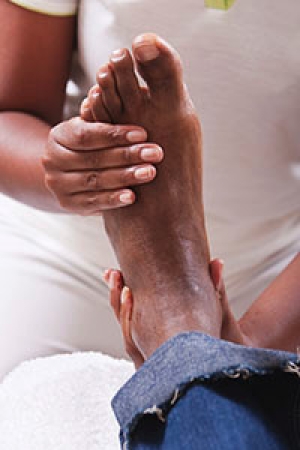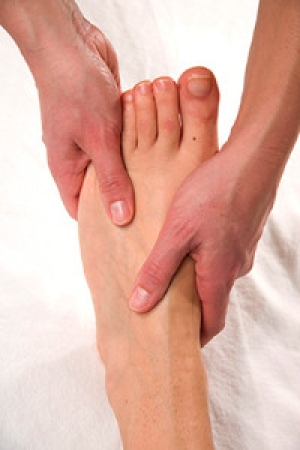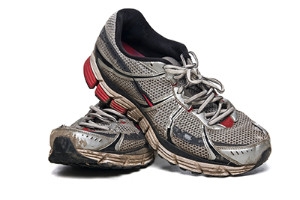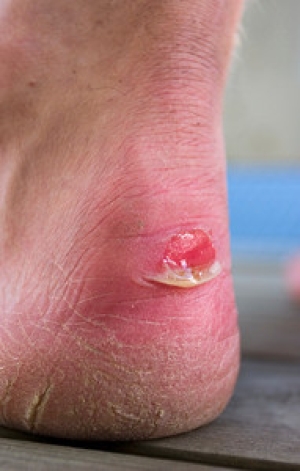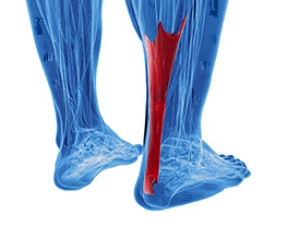
Diabetic Foot Care
Diabetes can cause two problems that can potentially affect the feet: Diabetic neuropathy and Peripheral Vascular Disease. Diabetic neuropathy occurs when nerves in your legs and feet become damaged, which prevents you from feeling heat, cold, or pain. The problem with diabetic neuropathy is that a cut or sore on the foot may go unnoticed and the cut may eventually become infected. This condition is also a main cause of foot ulcers. Additionally, Peripheral vascular disease also affects blood flow in the body. Poor blood flow will cause sores and cuts to take longer to heal. Infections that don’t heal do to poor blood flow can potentially cause ulcers or gangrene.
There are certain foot problems that are more commonly found in people with diabetes such as Athlete’s foot, calluses, corns, blisters, bunions, foot ulcers, ingrown toenails, and plantar warts. These conditions can lead to infection and serious complications such as amputation. Fortunately, proper foot care can help prevent these foot problems before they progress into more serious complications.
Each day you should wash your feet in warm water with a mild soap. When you finish washing your feet, dry them carefully especially between your toes. You should also perform daily foot inspections to ensure you don’t have any redness, blisters, or calluses. Furthermore, if you are diabetic, you should always wear closed-toed shoes or slippers to protect your feet. Practicing these tips will help ensure that your feet are kept healthy and away from infection.
If you have diabetes, contact your podiatrist if you have any of the following symptoms on your feet: changes in skin color, corns or calluses, open sores that are slow to heal, unusual and persistent odor, or changes in skin temperature. Your podiatrist will do a thorough examination of your feet to help treat these problematic conditions.
Causes of Plantar Fasciitis
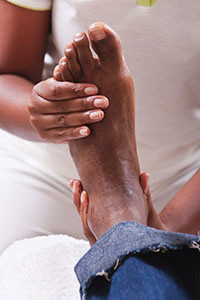 If you are experiencing moderate to severe pain in your heel or foot, you may have Plantar Fasciitis. Plantar Fasciitis is an inflammatory condition that affects the heel of the foot, causing in some cases, very extreme pain. There are many causes for this, one being overstretching of the plantar fascia ligament, which runs from the heel to the ball of the foot. This ligament supports the arch and can be affected by both the feet below it, and the muscles above. If the calf muscles are too tight, this can pull on the ligament and cause inflammation. A similar thing happens if you have flat feet. The foot stretches the ligament from below. Other activities that can cause Plantar Fasciitis are standing for long periods of time, running while planting your heel instead of your toe, and constant stress on the plantar fascia ligament. Make sure to stretch your calves, take care that your footwear is not worn out, and seek podiatric treatment if your condition is painful.
If you are experiencing moderate to severe pain in your heel or foot, you may have Plantar Fasciitis. Plantar Fasciitis is an inflammatory condition that affects the heel of the foot, causing in some cases, very extreme pain. There are many causes for this, one being overstretching of the plantar fascia ligament, which runs from the heel to the ball of the foot. This ligament supports the arch and can be affected by both the feet below it, and the muscles above. If the calf muscles are too tight, this can pull on the ligament and cause inflammation. A similar thing happens if you have flat feet. The foot stretches the ligament from below. Other activities that can cause Plantar Fasciitis are standing for long periods of time, running while planting your heel instead of your toe, and constant stress on the plantar fascia ligament. Make sure to stretch your calves, take care that your footwear is not worn out, and seek podiatric treatment if your condition is painful.
Plantar fasciitis can be very painful and inconvenient. If you are experiencing heel pain or symptoms of plantar fasciitis, contact one of our podiatrists from PA Foot & Ankle Associates. Our doctors can provide the care you need to keep you pain-free and on your feet.
What Is Plantar Fasciitis?
Plantar fasciitis is the inflammation of the thick band of tissue that runs along the bottom of your foot, known as the plantar fascia, and causes mild to severe heel pain.
What Causes Plantar Fasciitis?
- Excessive running
- Non-supportive shoes
- Overpronation
- Repeated stretching and tearing of the plantar fascia
How Can It Be Treated?
- Conservative measures – anti-inflammatories, ice packs, stretching exercises, physical therapy, orthotic devices
- Shockwave therapy – sound waves are sent to the affected area to facilitate healing and are usually used for chronic cases of plantar fasciitis
- Surgery – usually only used as a last resort when all else fails. The plantar fascia can be surgically detached from the heel
While very treatable, plantar fasciitis is definitely not something that should be ignored. Especially in severe cases, speaking to your doctor right away is highly recommended to avoid complications and severe heel pain. Your podiatrist can work with you to provide the appropriate treatment options tailored to your condition.
If you have any questions please feel free to contact one of our offices located in Allentown, Easton, Northampton, and Chew Street in Allentown, PA . We offer the newest diagnostic and treatment technologies for all your foot and ankle needs.
Plantar Fasciitis
The plantar fascia is a connective tissue in the heel that stretches across the bottom length of your foot. Plantar fasciitis occurs when the connective tissue becomes inflamed, causing heel pain and discomfort during physical activity. Although the condition is completely treatable, traditional methods can take up to a year to start becoming effective.
Plantar fasciitis is caused by a number of everyday activities, so understanding the condition is important for managing and treating it. One of the most common causes of plantar fasciitis is excessive running, especially with improper fitting or non-supportive shoes. Too much exercise can lead to the plantar fascia being overworked and overstretched, which can cause tears in the tissue. Along with improper fitting shoes, pronation, the rolling of the feet inward, is a common cause of plantar fasciitis. If not treated properly, the plantar fascia becomes overstretched and starts to tear, causing inflammation.
Despite the common causes of plantar fasciitis, there are many different treatment options. For less severe cases, conservative home remedies include taking anti-inflammatory drugs to alleviate pain, applying ice packs to the bottom of your foot and heel, slowly stretching and exercising your feet to re-strengthen the tissue, and using orthotic devices are all ways to help manage your plantar fasciitis.
For more severe cases, shockwave therapy has become a common solution for plantar fasciitis. Shockwave therapy can effectively break up the tissue on the bottom of your foot which facilitates healing and regeneration. This fights the chronic pain caused by plantar fasciitis. Even if this doesn’t work, surgery is always a final option. Surgery on the tissue itself can be done to permanently correct the issue and stop the inflammation and pain in your heels.
No matter what the case may be, consulting your podiatrist is the first and best step to recovery. Even the slightest amount of heel pain could be the first stage of plantar fasciitis. Untreated symptoms can lead to the tearing and overstretching of tissue. Because the tearing of tissue can be compounded if it remains ignored, it can evolve into a severe case. The solution is early detection and early treatment. Talk to your podiatrist about the possibilities of plantar fasciitis if you’re experiencing heel pain.
How to Avoid Peripheral Neuropathy
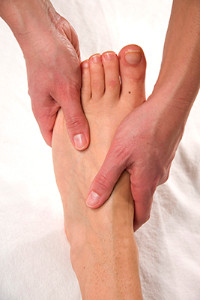 Peripheral neuropathy is a disorder that occurs frequently in diabetics, typically in the feet. The symptoms include: numbness, tingling, throbbing, freezing/burning sensation, and pain. Not all those with diabetes will get peripheral neuropathy, and not all suffering from it will have the exact same symptoms. This neuropathy occurs when the walls of the capillaries, or tiny blood vessels, are damaged by high sugar levels in the blood. Due to the damage they are not able to carry enough blood to the nerves, which then leads to the aforementioned symptoms. In order to avoid peripheral neuropathy there a few things that can be done. First, and perhaps most importantly, monitor your blood sugar level, and keep it in balance. Exercise and diet can help keep your weight down, as well as your blood sugar. If you are suffering from numbness in your feet, and you haven’t been diagnosed with diabetes, it is essential that you see a doctor immediately.
Peripheral neuropathy is a disorder that occurs frequently in diabetics, typically in the feet. The symptoms include: numbness, tingling, throbbing, freezing/burning sensation, and pain. Not all those with diabetes will get peripheral neuropathy, and not all suffering from it will have the exact same symptoms. This neuropathy occurs when the walls of the capillaries, or tiny blood vessels, are damaged by high sugar levels in the blood. Due to the damage they are not able to carry enough blood to the nerves, which then leads to the aforementioned symptoms. In order to avoid peripheral neuropathy there a few things that can be done. First, and perhaps most importantly, monitor your blood sugar level, and keep it in balance. Exercise and diet can help keep your weight down, as well as your blood sugar. If you are suffering from numbness in your feet, and you haven’t been diagnosed with diabetes, it is essential that you see a doctor immediately.
Diabetic foot care is important in preventing foot ailments such as ulcers. If you are suffering from diabetes or have any other concerns about your feet, contact one of our podiatrists from PA Foot & Ankle Associates. Our doctors can provide the care you need to keep you pain-free and on your feet.
Diabetic Foot Care
Diabetes affects millions of people every year. The condition can damage blood vessels in many parts of the body, especially the feet. Because of this, taking care of your feet is essential if you have diabetes, and having a podiatrist help monitor your foot health is highly recommended.
The Importance of Caring for Your Feet
- Routinely inspect your feet for bruises or sores.
- Wear socks that fit your feet comfortably.
- Wear comfortable shoes that provide adequate support.
Patients with diabetes should have their doctor monitor their blood levels, as blood sugar levels play such a huge role in diabetic care. Monitoring these levels on a regular basis is highly advised.
It is always best to inform your healthcare professional of any concerns you may have regarding your feet, especially for diabetic patients. Early treatment and routine foot examinations are keys to maintaining proper health, especially because severe complications can arise if proper treatment is not applied.
If you have any questions please feel free to contact one of our offices located in Allentown, Easton, Northampton, and Chew Street in Allentown, PA . We offer the newest diagnostic and treatment technologies for all your foot and ankle needs.
How to Care for Diabetic Foot
Millions of people are affected by diabetes each year. Diabetes damages blood vessels in all parts of the body, especially the feet. The legs and feet may develop slow blood flow, which causes neuropathy, or nerve damage. Once a diabetic patient develops neuropathy, it is important that the feet are well taken care of. Otherwise, the lower limbs may have to be amputated. This only happens in drastic cases, but it shows how seriously diabetic foot care should be taken.
It is very important to always wash and dry the feet thoroughly, especially in between the toes, if you’re a diabetic. Secondly, examining your feet and toes for redness or sores must be done, even if you do not feel pain. You may also want to examine your feet from the bottom. Try to avoid wearing colored socks to prevent infections that may occur from the dye. Well-fitting socks are also highly recommended.
A diabetic’s physician should always monitor their blood levels to test how well blood sugars are being maintained. In addition to giving advice about everyday eating habits and foot care, a physician may prescribe medicine to help with the diabetic patient’s neuropathy. It is also advised to see a podiatrist if experiencing any feet conditions. Toenails may also need to be taken care of by a podiatrist. This prevents patients from cutting too deeply around their cuticles, which can lead to infection.
A person can take care of their feet at home by following the instructions of their physician. Using creams on one’s feet is also an effective way to heal dryness. Proceed with caution when using tools to remove calluses, as severe diabetics may not be able to feel pain on their feet. If any complications arise do not hesitate to contact a podiatrist.
On a daily basis, diabetic feet must be checked. If you are ever concerned about something, contact your health care professional. You never want to wait until a wound becomes too severe to treat. If left untreated, gangrene may develop. Gangrene is a serious infection that can lead to sepsis or amputation. It is also important for diabetics to be on the lookout for ulcers. Ulcers are sores that develop from tissue loss on the skin. They can be quite painful and require intensive treatment. Early treatment and everyday inspection are imperative to staying healthy.
High School Student gives Classmate Pair of Shoes
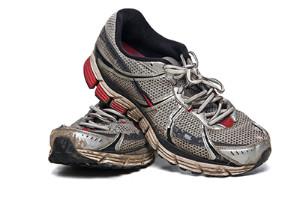 Eleventh grade student Gerald Cook from Wilson Magnet High School was recently given WHEC’s Do the Right Thing award for gifting a pair of shoes to a fellow student who was wearing shoes a size too small. Cook went to his teacher after noticing a classmate was wearing shoes that were too tight. He then asked the classmate himself for his shoe size and brought a pair of shoes to school for the student to wear. Wearing the right shoe size is necessary for overall foot health, especially for growing adolescents. While the need to wear properly fitting shoes may seem like a basic one, this simple practice is often overlooked and is the first step one can make in promoting good foot health.
Eleventh grade student Gerald Cook from Wilson Magnet High School was recently given WHEC’s Do the Right Thing award for gifting a pair of shoes to a fellow student who was wearing shoes a size too small. Cook went to his teacher after noticing a classmate was wearing shoes that were too tight. He then asked the classmate himself for his shoe size and brought a pair of shoes to school for the student to wear. Wearing the right shoe size is necessary for overall foot health, especially for growing adolescents. While the need to wear properly fitting shoes may seem like a basic one, this simple practice is often overlooked and is the first step one can make in promoting good foot health.
Getting the right shoe size is an important part of proper foot health. Seek the assistance of one of our podiatrists from PA Foot & Ankle Associates. Our doctors will provide the care you need to keep you pain-free and on your feet.
Getting the Right Shoe Size
There are many people who wear shoes that are the incorrect size, negatively affecting their feet and posture. Selecting the right shoes is not a difficult process, so long as you keep several things in mind when it comes to choosing the right pair.
- When visiting the shoe store, use the tools available to measure your foot.
- Be sure there is ‘wiggle room’. There should be about an inch between your toes and the tip of your shoes.
- Do not always assume you are the same size, as manufacturers run differently.
- Purchase shoes later in the day, as your feet swell as the day progresses.
- If a shoe is not comfortable, it is not suitable. Most shoes can’t be ‘broken in’, and comfort should be the ultimate goal when it comes to choosing the right pair of shoes
As our feet hold our body weight and keep us moving, it is important to treat them right. Picking the right pair of shoes can provide your feet comfort and mobility without pain.
If you have any questions, please feel free to contact one of our offices located in Allentown, Easton, Northampton, and Chew Street in Allentown, PA . We offer the newest diagnostic and treatment technologies for all your foot care needs.
Getting the Right Shoe Size: To Keep Your Feet Happy
People are constantly wearing improperly-fitting shoes. Though it isn’t hard, picking the right shoes does require keeping a few things in mind.
Shoe stores have rulers so you can get an exact measurement of your feet. Be sure to always measure your feet with your shoes on. Measuring just your foot will give you a shoe size that is 1-2 inches too small for picking the right size shoe.
To ensure that your toes won’t be cramped, make sure there is wiggle room. Approximately one inch should be between your toes and the tip of your shoe. It is easy to tell if your shoes are too tight, because you will start to experience pain, blisters, and swelling.
Additionally, do not always assume your shoe size will be the same at every store. Manufacturers sometimes run differently, and your size will vary from brand to brand. Make sure the stores you purchase from have return policies, in case there is a problem.
Rather than shoe shopping in the morning, it is advised to shop for shoes later in the day. Your feet will swell as the day passes. If shoes are purchased in the morning, they may not be as snug as they should be. Furthermore, not all two feet are the same size. Therefore, accommodations may be necessary.
An overall concern in buying shoes is making sure they are comfortable and supportive. There is no such thing as a shoe being ‘broken in’. If they are uncomfortable at the store, they likely will always be uncomfortable.
Since we do a lot of walking, it is important that we pick the right shoes. Our feet will benefit from this, and we will be happier and healthier because of it.
Breaking in the Queen’s New Shoes
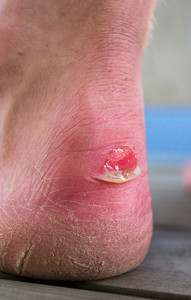 When Queen Elizabeth II breaks in a new pair of shoes, she doesn’t; she has a member of her staff break in her footwear for her. For many people, breaking in a new pair of shoes often results in uncomfortable pain and the formation of tender blisters on the feet. To avoid this issue altogether, the Queen instead gives her shoes to a junior member of Buckingham Palace staff who wears the same size. These shoes are then reportedly broken in by the staff member, who fulfills this task by walking up and down the palace corridors until the shoes have softened and become more comfortable. Long-time dressmaker for the queen, Stewart Parvin, revealed this information. While you may not be able to have someone break in your shoes for you, blisters can be avoided by gradually breaking in new shoes over a period of time.
When Queen Elizabeth II breaks in a new pair of shoes, she doesn’t; she has a member of her staff break in her footwear for her. For many people, breaking in a new pair of shoes often results in uncomfortable pain and the formation of tender blisters on the feet. To avoid this issue altogether, the Queen instead gives her shoes to a junior member of Buckingham Palace staff who wears the same size. These shoes are then reportedly broken in by the staff member, who fulfills this task by walking up and down the palace corridors until the shoes have softened and become more comfortable. Long-time dressmaker for the queen, Stewart Parvin, revealed this information. While you may not be able to have someone break in your shoes for you, blisters can be avoided by gradually breaking in new shoes over a period of time.
Blisters are prone to making everyday activities extremely uncomfortable. If your feet are hurting, contact one of our podiatrists of PA Foot & Ankle Associates. Our doctors can provide the care you need to keep you pain-free and on your feet.
Foot Blisters
Foot blisters develop as a result of constantly wearing tight or ill-fitting footwear. This happens due to the constant rubbing from the shoe, which can often lead to pain.
What Are Foot Blisters?
A foot blister is a small fluid-filled pocket that forms on the upper-most layer of the skin. Blisters are filled with clear fluid and can lead to blood drainage or pus if the area becomes infected.
How Do Blisters Form?
Blisters on the feet are often the result of constant friction of skin and material, usually by shoe rubbing. Walking in sandals, boots, or shoes that don’t fit properly for long periods of time can result in a blister. Having consistent foot moisture and humidity can easily lead to blister formation.
Prevention & Treatment
It is important to properly care for the affected area in order to prevent infection and ease the pain. Do not lance the blister and use a Band-Aid to provide pain relief. Also, be sure to keep your feet dry and wear proper fitting shoes. If you see blood or pus in a blister, seek assistance from a podiatrist.
If you have any questions, please feel free to contact one of our offices located in Allentown, Easton, Northampton, and Chew Street in Allentown, PA . We offer the newest diagnostic and treatment technologies for all your foot care needs.
Blisters on the Feet
Blisters are a common ailment of people who wear shoes that are either too tight or rub against the feet in an uncomfortable way. Knowing the basics of blisters is important for understanding how they are formed and what treatments should be used for them.
A blister on the foot, or any other part of the body, is a small pocket that is filled with fluid. It usually forms on the upper layer of the skin because these layers are loose enough to allow a blister to form. The most common fluid in a blister is just a clear, watery-like fluid that usually isn’t cause for concern. However, blisters can fill up with blood if they are deep enough and pus if they have become infected with bacteria.
Blisters almost always form on the feet due to shoes rubbing up against the foot, where the friction causes blisters. These can occur after you have walked for a long period of time or when your shoes do not fit you properly. Your feet are also more prone to blisters if they are moist, so keeping them dry and clean is one preventative step you can take.
Preventing infection should be the number one concern when treating blisters, as well as relieving the pain they can cause. Using a bandage to cover up the blister will help it heal and prevent bacteria from entering it. New skin will form under the blister and eventually cause it to pop. You can also take a sterilized pin and try to pop it yourself.
If the blister is filled with pus or blood, seeking treatment from a doctor is ideal. Antibiotics may need to be taken in order to completely eliminate the bacteria inside the blister. See a doctor to have an antibiotic prescribed.
The best way to treat blisters is to prevent them all together. Keeping your feet dry and making sure that your shoes fit properly are just two of the steps you can take to prevent blisters. Shoes that are too tight or shoes that are too loose and allow your feet to slide in them will cause blisters. Applying a bandage to an area where you think a blister is about to form is another way you can prevent them.
Achilles Tendon Injuries on the Rise
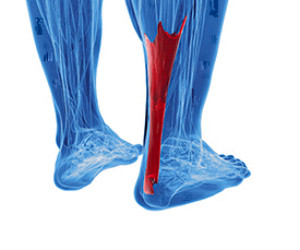 Many podiatrists are suspecting that Achilles tendon injuries will be on the rise especially amongst those aged 30 to 50. Every year, approximately 230,000 Achilles tendon injuries occur in the United States. While Achilles tendon injuries are typically common among young athletes, professionals suspect that the number of middle-aged and older patients sustaining Achilles tendon injuries is rising because they are staying active longer. The severity of Achilles tendon injuries can vary between mild to moderate. Injuries of this degree typically cause pain and stiffness but can heal on their own. Surgery may be necessary for more severe cases, such as the tearing or rupturing of the Achilles tendon.
Many podiatrists are suspecting that Achilles tendon injuries will be on the rise especially amongst those aged 30 to 50. Every year, approximately 230,000 Achilles tendon injuries occur in the United States. While Achilles tendon injuries are typically common among young athletes, professionals suspect that the number of middle-aged and older patients sustaining Achilles tendon injuries is rising because they are staying active longer. The severity of Achilles tendon injuries can vary between mild to moderate. Injuries of this degree typically cause pain and stiffness but can heal on their own. Surgery may be necessary for more severe cases, such as the tearing or rupturing of the Achilles tendon.
Achilles tendon injuries need immediate attention to avoid future complications. If you have any concerns, contact one of our podiatrists of PA Foot & Ankle Associates. Our doctors can provide the care you need to keep you pain-free and on your feet.
What Is the Achilles Tendon?
The Achilles tendon is a tendon that connects the lower leg muscles and calf to the heel of the foot. It is the strongest tendon in the human body and is essential for making movement possible. Because this tendon is such an integral part of the body, any injuries to it can create immense difficulties and should immediately be presented to a doctor.
What Are the Symptoms of an Achilles Tendon Injury?
There are various types of injuries that can affect the Achilles tendon. The two most common injuries are Achilles tendinitis and ruptures of the tendon.
Achilles Tendinitis Symptoms
- Inflammation
- Dull to severe pain
- Increased blood flow to the tendon
- Thickening of the tendon
Rupture Symptoms
- Extreme pain and swelling in the foot
- Total immobility
Treatment and Prevention
Achilles tendon injuries are diagnosed by a thorough physical evaluation, which can include an MRI. Treatment involves rest, physical therapy, and in some cases, surgery. However, various preventative measures can be taken to avoid these injuries, such as:
- Thorough stretching of the tendon before and after exercise
- Strengthening exercises like calf raises, squats, leg curls, leg extensions, leg raises, lunges, and leg presses
If you have any questions please feel free to contact one of our offices located in Allentown, Easton, Northampton, and Chew Street in Allentown, PA . We offer the newest diagnostic tools and technology to treat your foot and ankle needs.
